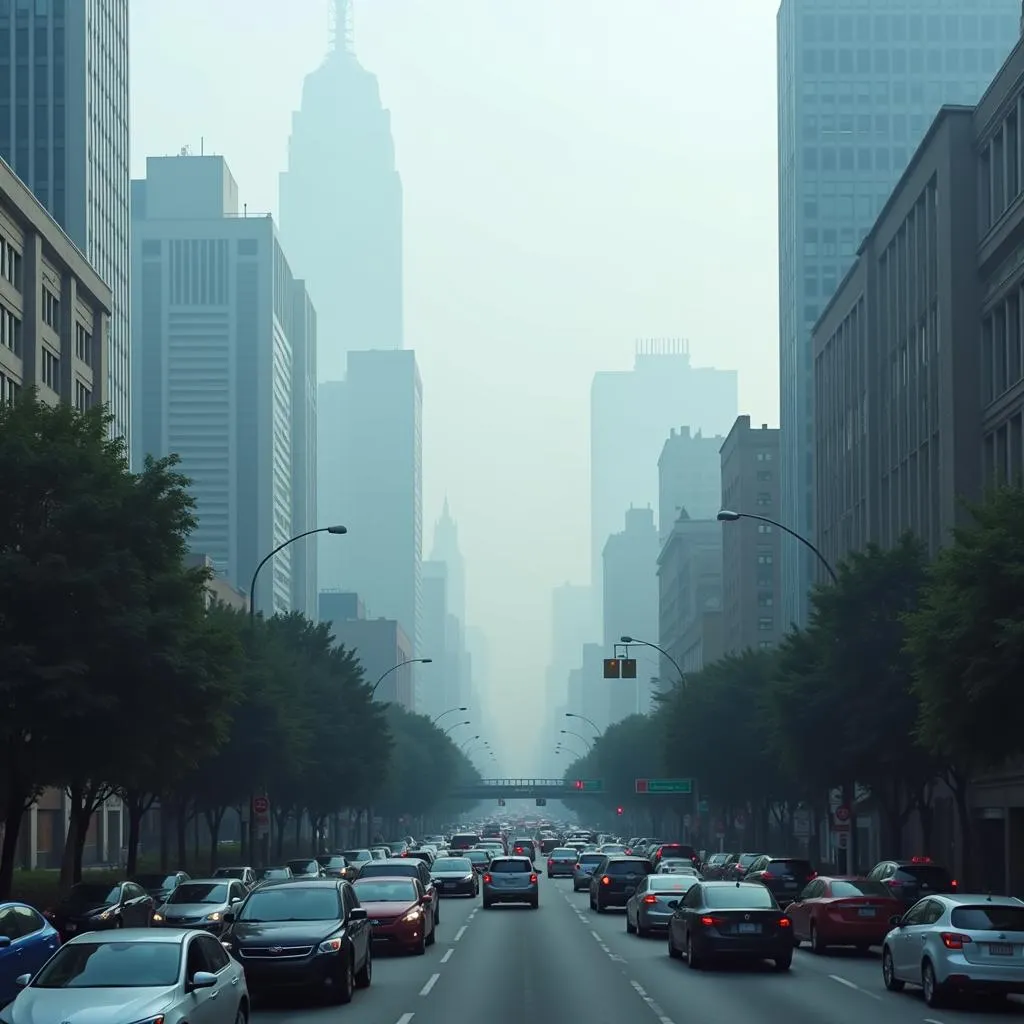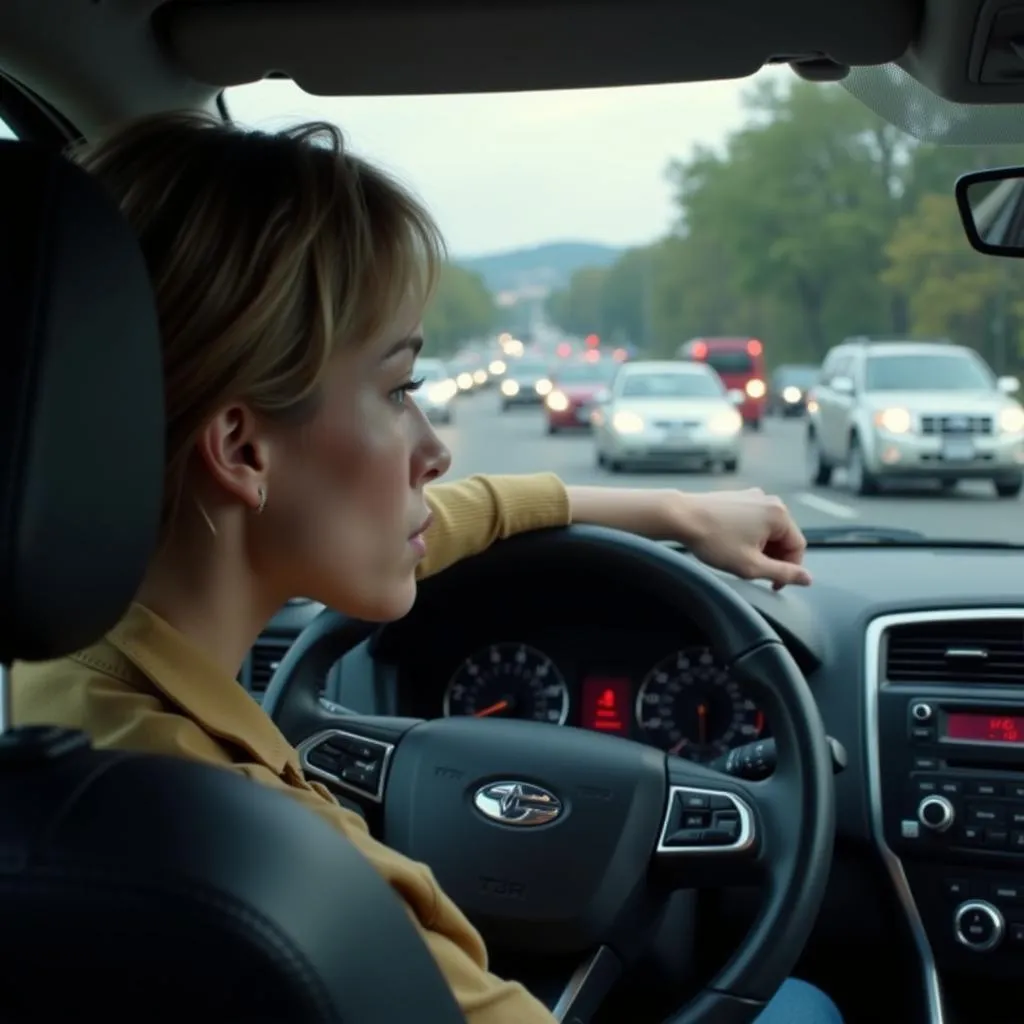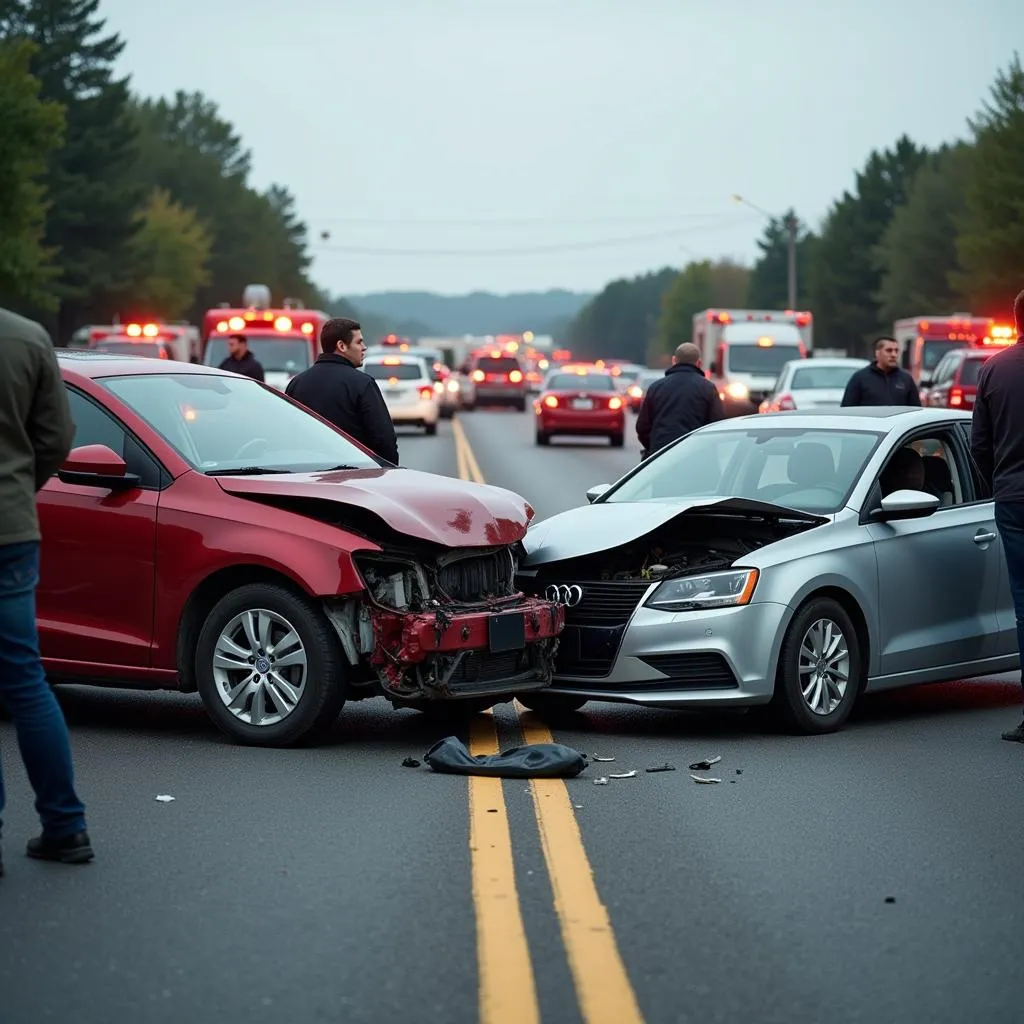The phrase “Menace To Society Car” often conjures images of reckless drivers and roaring engines, but the true threat runs deeper. While irresponsible driving certainly poses a risk, it’s crucial to examine the broader impact of automobiles on our social fabric. This exploration delves into the multifaceted ways cars, despite their convenience, can negatively impact our communities and the world at large.
Environmental Impact: A Looming Threat
One of the most pressing concerns associated with cars is their environmental footprint. The internal combustion engine, a mainstay in most vehicles, releases harmful pollutants like carbon dioxide, nitrogen oxides, and particulate matter. These emissions contribute significantly to air pollution, exacerbating respiratory illnesses and contributing to climate change.
 Car Exhaust Polluting City
Car Exhaust Polluting City
Beyond tailpipe emissions, the production, maintenance, and disposal of cars have significant environmental consequences. The extraction and processing of raw materials, manufacturing processes, and eventual scrapping all contribute to resource depletion, habitat destruction, and pollution.
Social Disconnection: Driving Us Apart?
While cars provide personal mobility, they can ironically lead to social isolation. Our reliance on cars often translates to less walking, cycling, and use of public transportation – activities that provide opportunities for chance encounters and community interaction.
 Isolated Driver in Traffic Jam
Isolated Driver in Traffic Jam
Furthermore, car-centric urban planning often prioritizes roads and parking spaces over public spaces, parks, and pedestrian-friendly infrastructure. This can create barriers between neighborhoods, limit social interactions, and diminish the overall sense of community.
Safety Concerns: A Persistent Danger
Despite advancements in safety technology, car accidents remain a leading cause of death and injury globally. Human error, speeding, drunk driving, and distracted driving all contribute to the alarming number of accidents. Beyond the immediate victims, these accidents have ripple effects, impacting families, communities, and healthcare systems.
 Car Accident on Busy Road
Car Accident on Busy Road
Moreover, the emphasis on car ownership can create a hostile environment for pedestrians and cyclists. Limited sidewalks, unsafe crosswalks, and aggressive driving behaviors all contribute to a climate of fear and discourage alternative modes of transportation.
Economic Disparity: A Roadblock to Equality?
Access to a car is often framed as a necessity, but this narrative overlooks the economic disparities it perpetuates. Car ownership is expensive, considering the initial purchase cost, insurance, maintenance, and fuel expenses. For low-income families, these costs can be a significant burden, limiting their access to employment, education, and essential services.
Furthermore, car-centric urban planning can disproportionately impact low-income communities. Public transportation options are often inadequate, forcing residents to rely on expensive ride-sharing services or endure long commutes, further exacerbating economic inequalities.
Rethinking Our Relationship with the “Menace to Society Car”
The term “menace to society car” may seem extreme, but it highlights the need for a critical examination of our car-dependent culture. It’s not about demonizing the automobile but acknowledging its multifaceted impact and exploring alternative approaches to transportation and urban planning. By investing in public transportation, promoting walkable cities, and encouraging sustainable transportation options, we can mitigate the negative consequences of car dependency and create a more equitable, sustainable, and socially connected future.